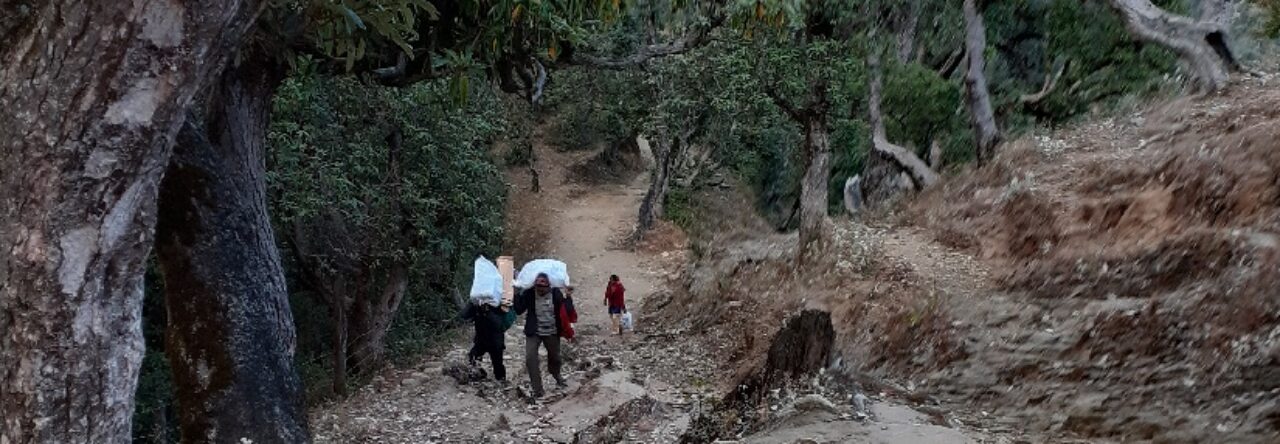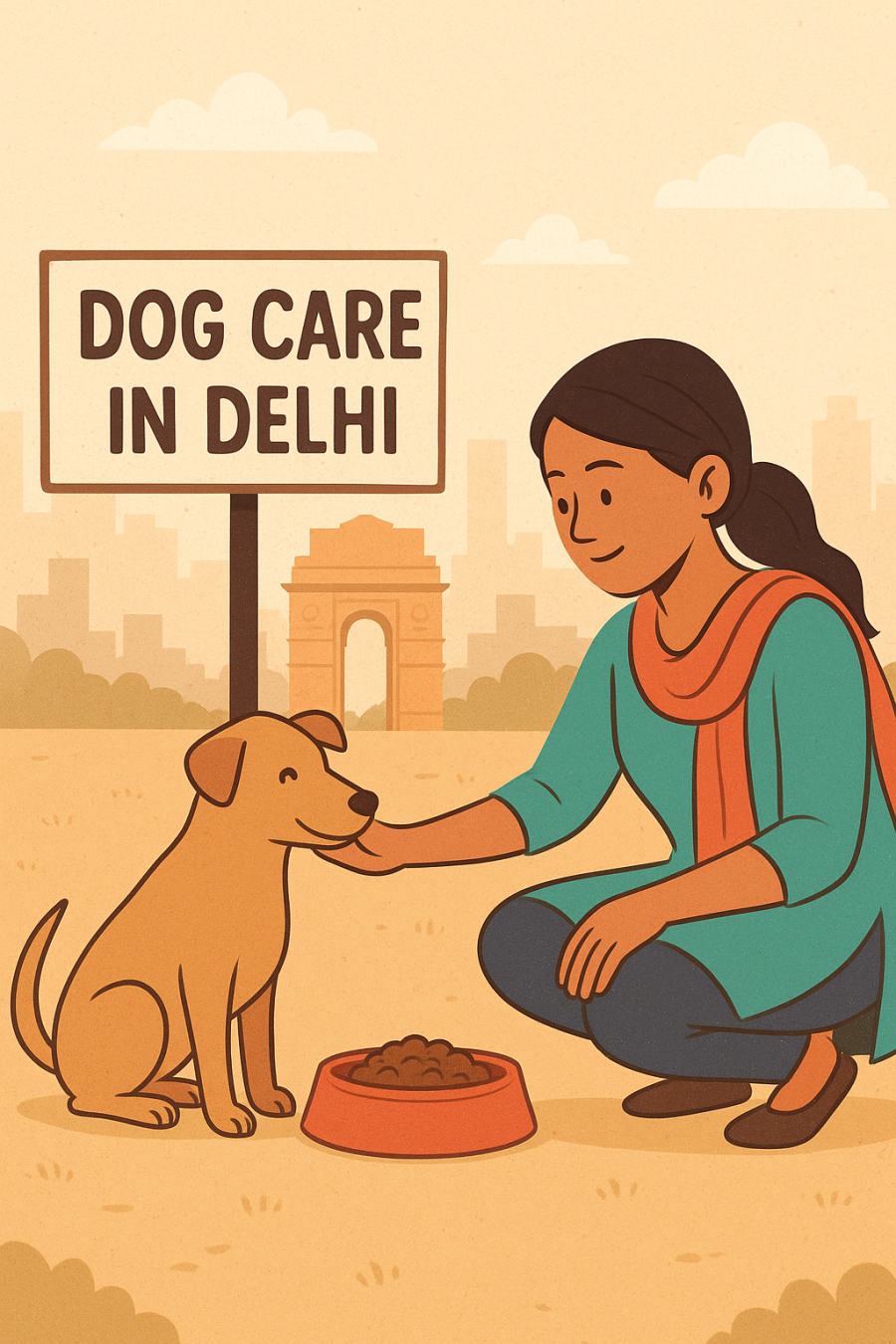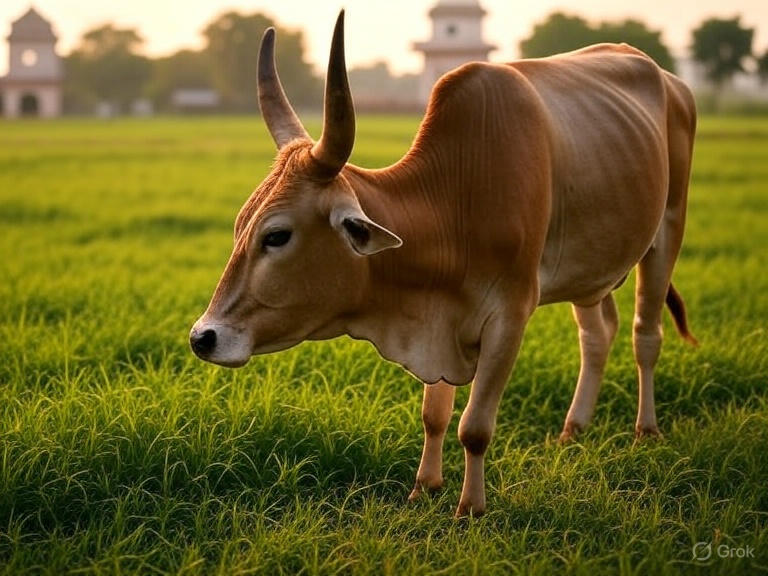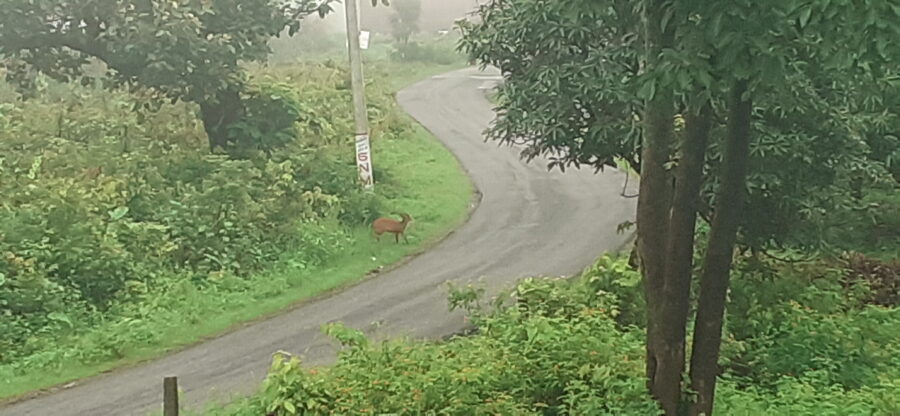Where is Gau Mata? Where is Gau Vansh?
In this so-called “New Bharat,” the sacredness of the gau vansh seems to have been forgotten. Cows and bulls, and the poor buffaloes are going through very hard times with practically no support from the Govt. Once revered Gau vansh as divine—are now treated as mere milk-producing machines, discarded the moment they cease to serve that purpose.
Farmers, lured by agriculture loans specifically tied to milk production, buy cows only for profit. The life of these gentle beings becomes a cycle of exploitation—chained by short ropes, denied natural movement, and isolated from their calves. Many calves don’t even get to nurse properly before being sold off or worse. Most cows never see their mate—the bull. Artificial insemination has replaced natural bonds in the name of productivity. Where is Gau Mata?
The irony is stark: we worship the cow, yet the moment she stops producing milk, she is abandoned, driven out of the shed or home, and left to fend for herself, even to the extent to eat garbage from the road sides. Even worse, newborn calves are beaten with sticks or sold off to butchers if he is a male calf, for a meagre sum—often before they’ve had a chance to properly nurse from their mothers. Every drop of milk we drink is a share of the rightful calf, it is not ours.
Buffaloes, too, suffer silently. They are rarely given the same emotional or cultural value as cows and are mostly seen through a commercial lens—as commodities for beef exports immediately after their milk production ends, even worse is the life of male buffalo which is born to be slaughtered by the insane humans who are in this trade. Across the country, the life of cattle is, for the most part, a living hell, except for a handful of good shelters and organizations like ISKCON.
Has any politician truly understood what it’s like to live a cow’s life? Tied in a dark shed, denied freedom, treated as a commodity—this is the daily reality of Gau Mata. And this cruelty extends to buffaloes too, who are even more ignored and abused, often ending up in the beef trade. Indian Desi cattle, Foreign bred cattle and Buffaloes deserve respect, we humans drink their milk, not they drink ours. We are indebted to them for life. Not pick and choose animal breeds to put one over other. All need to be saved and let them live a life of love and respect.
Despite constant political rhetoric about gau raksha (cow protection), the government has done very little beyond lip service and the politicians take selfies with innocent cows to get votes, nothing can be more sadistic than that. If we truly respect these sentient beings, then where is the national policy to ensure their welfare? Where is the effort to measure their happiness index, or ensure that no milk is extracted unless the calf gets its rightful share first?
It is time for a change. Monetary growth is not the ultimate goal of a civilized society. True progress is reflected in how we treat our most vulnerable—animals and humans alike.
Organizations like ISKCON have set a shining example, running cow shelters where cows live in peace, never slaughtered, never abandoned. Their approach should be studied and adopted nationwide. The Department of Animal Husbandry should be working closely with ISKCON to implement ethical, compassionate, and cruelty-free practices.
And if we are unable to ensure dignity, respect, and basic rights to these gentle beings, then perhaps it is time to rethink whether animal milk should even be sold at all in our country.
India’s future must include gau sammaan (respect for cattle) as a pillar of national ethics—not just empty slogans and token gestures.
Our Bharat (India) should better western countries in Gau raksha but our leaders are so focussed only on humans, votes and GDP. Beef and leather ban is a must so that our country does not earn from the sin of cruel money from animal and animal derivatives. Making Cow the national animal can reduce a lot of atrocities. Compare New Zealand to India’s cow care. Where is Gau Mata? That country has no religious significance to the cow, yet they care for them far better than us, let’s hope our country is as caring.
| Aspect |
New Zealand |
India |
| Animal Welfare Laws |
Strong, well-enforced animal welfare legislation under the Animal Welfare Act 1999. Ethical treatment, space to roam, and veterinary care are mandated. |
Laws exist (e.g., Prevention of Cruelty to Animals Act), but enforcement is poor. Many animals are mistreated, even in Gaushalas. |
| Freedom & Living Conditions |
Cows are mostly free-range, grazing in open green pastures. Well-ventilated barns in colder regions. Access to clean water and open skies. |
Majority are tied with short ropes, live in cramped, unhygienic sheds. Grazing land is scarce. Often forced to stand in waste and garbage. |
| Use of Technology |
Advanced tracking, ethical milking machines, and veterinary AI tools to monitor health and stress. |
Technology is mostly limited to commercial dairies. Traditional methods are still dominant in rural and small-scale farms. |
| Calf Welfare |
Regulations require calf to get initial milk (colostrum); weaning is done humanely. Separation is delayed to reduce stress. |
Calves often separated at birth. Male calves frequently abandoned or sold to butchers. Very little concern for calf nutrition or bonding. |
| Humane Milking Practices |
Regulated milking with cow comfort in mind. Over-milking is discouraged. |
Over-milking is common. Focus is solely on milk yield, with no concern for the emotional or physical state of the cow. Where is Gau Mata? |
| End-of-Life Care |
Euthanasia, when necessary, carried out humanely. Cows not sent to slaughter once old or unproductive. |
Many cows are abandoned, starved, or sold for slaughter once they stop producing milk. |
| Public Awareness |
High awareness about animal rights, welfare certifications, and sustainability. Consumers care about source and ethics. |
Cultural reverence exists, but practical awareness is low. Many people unaware of the daily suffering cows endure. |
| Support Systems |
Government actively promotes animal welfare through subsidies, vet support, and sustainability policies. |
Government initiatives focus more on dairy output than welfare. Few gaushalas function ethically, many underfunded. |
A Sustainable Way to Protect Cows and Buffaloes:
Shift the Focus from Milk to Manure
One of the most effective and practical ways to protect cows and buffaloes in India is to increase the price of milk, ensuring that a fair portion of the revenue is used for the animal’s food, shelter, and medical care. This would discourage over-exploitation and encourage farmers to treat these animals with dignity and compassion.
But beyond milk, there is an even more sustainable and holistic solution:
Make cow dung a valuable economic product.
Cow dung, when processed and promoted as organic manure, is far superior to chemical fertilizers. It enriches the soil naturally, retains water better, and supports healthier crops. By increasing the market demand and price of cow dung, farmers will see value in maintaining their animals even after milk production declines.
This will change the current mindset where animals are valued only for their milk. Instead, they’ll be seen as long-term assets, both spiritually and economically.
Key Actions to Support This Shift:
-
Raise milk prices with a legal provision that a portion is reinvested in cattle welfare.
- Ban all those people who sell milk without registration, every farmer or diary should have a proper papers so that unethical practices are punished immediately. The focus should be to protect animal’s well being and also the humans.
-
Ban or phase out chemical fertilizers, and promote cow dung manure as a national agricultural standard.
-
Support cow dung-based businesses—like compost, biogas, and eco-friendly products.
-
Offer government incentives and subsidies for farmers using organic manure and maintaining non-milking cattle.
-
Educate the public and farmers about the health benefits of food grown with natural fertilizers.
Cattle Deserve Space and Dignity—Keep Them Out of Cities
No cattle should be forced to live in urban environments. Cities are meant for humans and pets—not for cows, buffaloes, or bulls who deserve natural, spacious, and peaceful surroundings. It is both inhumane and undignified to see these majestic animals wandering through traffic, eating garbage, or collapsing on concrete roads.
Key Proposal:
-
All cattle should be relocated to villages, rural farmlands, and open swamp areas, where they can live as nature intended—freely, peacefully, and with adequate space.
-
Only farmers with sufficient land and infrastructure should be allowed to own cattle. Those with cramped spaces or no grazing land should not be permitted to keep these animals. These people should be severely punished under cruelty to animals’ act.
-
Animals have the right to freedom of movement, just like humans. Keeping them tied in a tiny shed, in unsanitary and stressful conditions, is pure cruelty.
-
Adopt the New Zealand model: Indian farms should develop open barnyards with safe boundaries, allowing cattle to roam, rest, and live naturally. New Zealand’s cattle farming is humane, spacious, and strictly regulated—India must learn from it.
Why This Matters:
-
It will reduce accidents, filth, and suffering in cities.
- Better management of manure production.
-
It ensures better living standards for animals.
-
It supports organized, ethical farming and improves ethical milking, quality and traceability.
-
It is the first step toward restoring dignity to our gau vansh (cattle lineage).
Let us rethink urban and rural boundaries with both humans and animals in mind. Compassion is not just about sheltering cattle—it’s about giving them the space and respect they deserve.
Time to Ban Cruelty and Restore Compassion in India
India was once known for its deep-rooted values of non-violence (ahimsa), compassion, and respect for all living beings. Before the 1950s, over 70% of our population was vegetarian, reflecting our spiritual connection with animals and nature. Today, that number has drastically fallen to around 30%—and along with it, our sense of empathy and moral responsibility. Where is Gau Mata?
We are slowly turning into a cruel, profit-driven nation, where animals are treated as commodities. Cows, buffaloes, goats, chickens, and even dogs are subjected to unimaginable torture—often butchered brutally, sometimes even skinned alive, just to feed a growing market of consumption, sadistic gluttony and greed.
It’s time to say enough.
What We Urgently Need:
-
Ban all forms of animal cruelty with strict enforcement and long-term punishment equal to murder, not just petty fines.
-
Ban butchery and the slaughter of animals for meat/beef, in all places.
-
Ban beef entirely and enforce it strictly across all states—not just as a cultural decision but a moral one. Passing the buck on state Govt. has got no meaning, it makes sense only if your jurisdiction ends with the centre.
-
Ban leather and promote cruelty-free alternatives, supporting innovation in plant-based and synthetic materials.
-
Promote vegetarianism and plant-based living, not only for spiritual and ethical reasons, but also for better health and a sustainable planet.
-
Educate the youth in schools and colleges about animal rights, compassion, and the importance of ahimsa in daily life.
We cannot call ourselves a truly civilized or developed nation if we allow innocent sentient beings to suffer, bleed, and die—just to satisfy human greed or taste. Progress is not measured by economic growth alone, but by how we treat those who have no voice.
Let us return to our roots. Let India become once again a beacon of compassion, where no animal is harmed, no life is traded, and kindness is our true wealth. We still have thousands of other ways to grow our GDP without harming animals.
“Tumne apno ko maar ke kamaaya, toh kya kamaaya?”
English Translation:
“If you earned by killing your own, what did you really earn?”
Final Thought:
Protecting cows and buffaloes should not be about sentiment alone—it should be a well-integrated economic, ecological, and ethical movement. When farmers see long-term value in both milk and manure, animal welfare will no longer be a burden—it will become a respected livelihood.
“Ahimsa Paramo Dharmam”



